-
Executive Summary
-
Market Introduction
-
Definition 20
-
Scope of the Study 20
-
Market Structure 20
-
List of Assumptions
-
21
-
Research Methodology
-
Research Process 23
-
Primary
-
Research 23
-
Secondary Research 24
-
Market Size Estimation 25
-
Forecast Model 25
-
Market Dynamics
-
Introduction 27
-
Drivers 27
- Increased consumption of beverages 27
- Growth
- Several environmental benefits 29
- Drivers Impact Analysis 29
-
in the pharmaceutical industry 28
-
Restraints 29
- Availability
- Restraints Impact Analysis 30
-
of other alternatives 29
-
Opportunity
- Scope in developing nations 30
-
30
-
Market Factor Analysis
-
Porter’s Five Forces Analysis 32
- Threat of New Entrants 32
- Bargaining Power of Suppliers 32
- Threat of Substitutes 32
- Bargaining Power of Buyers 33
- Segment Rivalry 33
-
Supply
-
Chain Analysis 33
-
Import Analysis of Glass Products (Carboys, Bottles,
-
Flasks, Jars, Pots, Phials, Ampoules & Other Containers) 34
-
Export
-
Analysis of Glass Products (Carboys, Bottles, Flasks, Jars, Pots, Phials, Ampoules
-
and Other Containers) 35
-
Pricing Analysis 37
-
Manufacturing &
-
Labor Cost Structure Analysis of Glass Packaging 37
-
Global Glass Packaging
-
Market, By Product
-
Overview 40
- Standard Glass Quality 40
- Premium Glass Quality 40
- Super Premium Glass Quality 40
-
Global Glass Packaging Market, By Application
-
Overview 43
- Food Packaging 43
- Personal Care Packaging
- Pharmaceuticals Packaging 43
- Others 44
-
7.1.1
-
Beverage Packaging 43
-
43
-
Global
-
Glass Packaging Market, By Region
-
Overview 47
-
North America 49
- U.S. 53
- Canada 56
-
Europe 59
- Germany 63
- U.K 66
- Italy 68
- Spain 71
- France 73
-
8.3.6
-
Rest of Europe 76
-
Asia-Pacific 79
- China 83
- Japan
- India 88
- Rest of Asia-Pacific 90
-
85
-
Rest of the World
- Middle East & Africa 97
- South America 99
-
(RoW) 93
-
Competitive Landscape
-
Market Share Analysis 103
-
Product Benchmarking
-
104
-
Company Profiles
-
Owens-Illinois Inc. 106
- Financial Overview 106
- Products Offerings
- SWOT Analysis 107
- Key Strategy 108
-
10.1.1
-
Company Overview 106
-
107
-
Ardagh
- Company Overview 109
- Financial Overview 109
- Products Offerings 110
- SWOT Analysis 111
- Key Strategy
-
Group S.A. 109
-
111
-
Verallia 112
- Company Overview 112
- Financial
- Products Offerings 112
- SWOT Analysis 112
- Key Strategy 112
-
overview 112
-
Vidrala S.A. 113
- Company Overview
- Financial overview 113
- Products Offerings 114
- SWOT Analysis 114
- Key Strategy 115
-
113
-
10.4.4
-
Key Development 114
-
BA Vidro 116
- Company Overview 116
- Financial Overview
- Products Offerings 117
- SWOT Analysis 117
-
116
-
10.5.5
-
Key Strategy 117
-
Gerresheimer AG 118
- Company Overview 118
- Financial Overview 118
- Products Offerings 119
- SWOT
- Key Strategy 120
-
Analysis 120
-
Vetropack Holding Company 121
- Company Overview 121
- Financial Overview 121
- Products
- SWOT Analysis 123
- Key Strategy 123
- Company Overview 124
- Financial
- Products Offerings 124
- SWOT Analysis 125
- Key Strategy 125
-
Offerings 122
-
10.8
-
Stölzle Glass Group 124
-
Overview 124
-
Piramal Glass 126
- Company Overview
- Financial Overview 126
- Products Offerings 127
- Key Strategy 128
-
126
-
10.9.4
-
SWOT Analysis 128
-
Wiegand-Glas GmbH 129
- Company Overview 129
- Financial overview 129
- Key Developments 129
- SWOT Analysis
- Key Strategy 129
-
10.10.3
-
Products Offerings 129
-
129
-
Zignago Vetro S.P.A. 130
- Financial Overview 130
- Products Offerings
- SWOT Analysis 131
- Key Strategy 132
-
10.11.1
-
Company Overview 130
-
131
-
Verescence
- Company Overview 133
- Financial overview 133
- SWOT Analysis 134
- Key Strategy
-
133
-
10.12.3
-
Products Offerings 133
-
134
-
Luigi Bormioli Corporation 135
- Company Overview 135
- Financial Overview 135
- Products Offerings 135
- Key Strategy 136
-
10.13.4
-
SWOT Analysis 135
-
Vetrobalsamo Spa 137
- Company Overview 137
- Financial Overview 137
- SWOT Analysis 138
- Key Strategy
-
10.14.3
-
Products Offerings 137
-
138
-
Allied Glass Containers Ltd 139
- Company Overview 139
- Financial Overview 139
- Products Offerings 139
-
10.15.4
-
SWOT Analysis 139
-
Nihon Yamamura Glass Co., Ltd. 140
- Company
- Financial Overview 140
- Products Offerings
- SWOT Analysis 141
- Key Strategy 141
-
Overview 140
-
140
-
Vitro
- Company Overview 142
- Financial Overview 142
- SWOT Analysis 143
- Key Strategy
-
142
-
10.17.3
-
Products Offerings 143
-
143
-
Heinz Glas GmbH & Co. KGAA 144
- Company Overview
- Financial Overview 144
- Products Offerings 144
- Key Strategy 145
-
144
-
10.18.4
-
SWOT Analysis 145
-
Glass Packaging Manufacturing
-
Process, & Marketing Strategy Analysis
-
Marketing Channel of Glass
-
Packaging Products 147
-
Glass Manufacturing process 147
-
Appendix
-
References 150
-
List of Tables
-
MARKET SYNOPSIS 17
-
LIST OF ASSUMPTIONS 21
-
ALCOHOL CONSUMERS, EX-DRINKERS AND
-
LIFETIME ABSTAINERS, 2020 28
-
NORTH AMERICA: IMPORT ANALYSIS OF GLASS
-
PRODUCTS, 2023-2032 (USD THOUSAND) 34
-
EUROPE: IMPORT ANALYSIS OF GLASS
-
PRODUCTS, 2023-2032 (USD THOUSAND) 34
-
ASIA-PACIFIC: IMPORT ANALYSIS
-
OF GLASS PRODUCTS, 2023-2032 (USD THOUSAND) 34
-
MIDDLE EAST & AFRICA:
-
IMPORT ANALYSIS OF GLASS PRODUCTS, 2023-2032 (USD THOUSAND) 35
-
NORTH
-
AMERICA: EXPORT ANALYSIS OF GLASS PRODUCTS, 2023-2032 (USD THOUSAND) 35
-
TABLE
-
EUROPE: EXPORT ANALYSIS OF GLASS PRODUCTS, 2023-2032 (USD THOUSAND) 35
-
TABLE
-
ASIA-PACIFIC: EXPORT ANALYSIS OF GLASS PRODUCTS, 2023-2032 (USD THOUSAND) 36
-
MIDDLE EAST & AFRICA: EXPORT ANALYSIS OF GLASS PRODUCTS, 2023-2032
-
(USD THOUSAND) 36
-
PROPORTION OF MANUFACTURING COST STRUCTURE 37
-
LABOR COST ANALYSIS 38
-
GLOBAL GLASS PACKAGING MARKET, BY
-
PRODUCT, 2023-2032 (USD MILLION) 41
-
GLOBAL GLASS PACKAGING MARKET,
-
BY PRODUCT, 2023-2032 (USD MILLION) 41
-
GLOBAL GLASS PACKAGING MARKET,
-
BY PRODUCT, 2023-2032 (MILLION TONNES) 41
-
GLOBAL GLASS PACKAGING MARKET,
-
BY PRODUCT, 2023-2032 (MILLION TONNES) 41
-
GLOBAL GLASS PACKAGING MARKET,
-
BY APPLICATION, 2023-2032 (USD MILLION) 44
-
GLOBAL GLASS PACKAGING
-
MARKET, BY APPLICATION, 2023-2032 (USD MILLION) 45
-
GLOBAL GLASS PACKAGING
-
MARKET, BY APPLICATION, 2023-2032 (MILLION TONNES) 45
-
GLOBAL GLASS
-
PACKAGING MARKET, BY APPLICATION, 2023-2032 (MILLION TONNES) 45
-
GLOBAL
-
GLASS PACKAGING MARKET, BY COUNTRY, 2023-2032 (USD MILLION) 47
-
GLOBAL
-
GLASS PACKAGING MARKET, BY COUNTRY, 2023-2032 (USD MILLION) 48
-
GLOBAL
-
GLASS PACKAGING MARKET, BY COUNTRY, 2023-2032 (MILLION TONNES) 48
-
TABLE 25
-
GLOBAL GLASS PACKAGING MARKET, BY COUNTRY, 2023-2032 (MILLION TONNES) 48
-
TABLE
-
NORTH AMERICA: GLOBAL GLASS PACKAGING MARKET, BY COUNTRY, 2023-2032 (USD MILLION)
-
49
-
NORTH AMERICA: GLOBAL GLASS PACKAGING MARKET, BY COUNTRY, 2023-2032
-
(USD MILLION) 49
-
NORTH AMERICA: GLOBAL GLASS PACKAGING MARKET, BY
-
COUNTRY, 2023-2032 (MILLION TONNES) 50
-
NORTH AMERICA: GLOBAL GLASS
-
PACKAGING MARKET, BY COUNTRY, 2023-2032 (MILLION TONNES) 50
-
NORTH
-
AMERICA: GLOBAL GLASS PACKAGING MARKET, BY PRODUCT, 2023-2032 (USD MILLION) 50
-
NORTH AMERICA: GLOBAL GLASS PACKAGING MARKET, BY PRODUCT, 2023-2032 (USD
-
MILLION) 50
-
NORTH AMERICA: GLOBAL GLASS PACKAGING MARKET, BY PRODUCT,
-
NORTH AMERICA: GLOBAL GLASS PACKAGING
-
MARKET, BY PRODUCT, 2023-2032 (MILLION TONNES) 51
-
NORTH AMERICA: GLOBAL
-
GLASS PACKAGING MARKET, BY APPLICATION, 2023-2032 (USD MILLION) 51
-
TABLE 35
-
NORTH AMERICA: GLOBAL GLASS PACKAGING MARKET, BY APPLICATION, 2023-2032 (USD MILLION)
-
52
-
NORTH AMERICA: GLOBAL GLASS PACKAGING MARKET, BY APPLICATION, 2023-2032
-
(MILLION TONNES) 52
-
NORTH AMERICA: GLOBAL GLASS PACKAGING MARKET,
-
BY APPLICATION, 2023-2032 (MILLION TONNES) 53
-
U.S.: GLOBAL GLASS PACKAGING
-
MARKET, BY PRODUCT, 2023-2032 (USD MILLION) 53
-
U.S.: GLOBAL GLASS
-
PACKAGING MARKET, BY PRODUCT, 2023-2032 (USD MILLION) 53
-
U.S.: GLOBAL
-
GLASS PACKAGING MARKET, BY PRODUCT, 2023-2032 (MILLION TONNES) 54
-
TABLE 41
-
U.S.: GLOBAL GLASS PACKAGING MARKET, BY PRODUCT, 2023-2032 (MILLION TONNES) 54
-
U.S.: GLOBAL GLASS PACKAGING MARKET, BY APPLICATION, 2023-2032 (USD MILLION)
-
54
-
U.S.: GLOBAL GLASS PACKAGING MARKET, BY APPLICATION, 2023-2032
-
(USD MILLION) 55
-
U.S.: GLOBAL GLASS PACKAGING MARKET, BY APPLICATION,
-
U.S.: GLOBAL GLASS PACKAGING MARKET,
-
BY APPLICATION, 2023-2032 (MILLION TONNES) 55
-
CANADA: GLOBAL GLASS
-
PACKAGING MARKET, BY PRODUCT, 2023-2032 (USD MILLION) 56
-
CANADA: GLOBAL
-
GLASS PACKAGING MARKET, BY PRODUCT, 2023-2032 (USD MILLION) 56
-
CANADA:
-
GLOBAL GLASS PACKAGING MARKET, BY PRODUCT, 2023-2032 (MILLION TONNES) 56
-
TABLE
-
CANADA: GLOBAL GLASS PACKAGING MARKET, BY PRODUCT, 2023-2032 (MILLION TONNES)
-
57
-
CANADA: GLOBAL GLASS PACKAGING MARKET, BY APPLICATION, 2023-2032
-
(USD MILLION) 57
-
CANADA: GLOBAL GLASS PACKAGING MARKET, BY APPLICATION,
-
CANADA: GLOBAL GLASS PACKAGING MARKET,
-
BY APPLICATION, 2023-2032 (MILLION TONNES) 58
-
CANADA: GLOBAL GLASS
-
PACKAGING MARKET, BY APPLICATION, 2023-2032 (MILLION TONNES) 58
-
EUROPE:
-
GLOBAL GLASS PACKAGING MARKET, BY COUNTRY, 2023-2032 (USD MILLION) 59
-
TABLE
-
EUROPE: GLOBAL GLASS PACKAGING MARKET, BY COUNTRY, 2023-2032 (USD MILLION) 60
-
EUROPE: GLOBAL GLASS PACKAGING MARKET, BY COUNTRY, 2023-2032 (MILLION
-
TONNES) 60
-
EUROPE: GLOBAL GLASS PACKAGING MARKET, BY COUNTRY, 2023-2032
-
(MILLION TONNES) 60
-
EUROPE: GLOBAL GLASS PACKAGING MARKET, BY PRODUCT,
-
EUROPE: GLOBAL GLASS PACKAGING MARKET,
-
BY PRODUCT, 2023-2032 (USD MILLION) 61
-
EUROPE: GLOBAL GLASS PACKAGING
-
MARKET, BY PRODUCT, 2023-2032 (MILLION TONNES) 61
-
EUROPE: GLOBAL GLASS
-
PACKAGING MARKET, BY PRODUCT, 2023-2032 (MILLION TONNES) 61
-
EUROPE:
-
GLOBAL GLASS PACKAGING MARKET, BY APPLICATION, 2023-2032 (USD MILLION) 62
-
TABLE
-
EUROPE: GLOBAL GLASS PACKAGING MARKET, BY APPLICATION, 2023-2032 (USD MILLION)
-
62
-
EUROPE: GLOBAL GLASS PACKAGING MARKET, BY APPLICATION, 2023-2032
-
(MILLION TONNES) 62
-
EUROPE: GLOBAL GLASS PACKAGING MARKET, BY APPLICATION,
-
GERMANY: GLOBAL GLASS PACKAGING MARKET,
-
BY PRODUCT, 2023-2032 (USD MILLION) 63
-
GERMANY: GLOBAL GLASS PACKAGING
-
MARKET, BY PRODUCT, 2023-2032 (USD MILLION) 63
-
GERMANY: GLOBAL GLASS
-
PACKAGING MARKET, BY PRODUCT, 2023-2032 (MILLION TONNES) 64
-
GERMANY:
-
GLOBAL GLASS PACKAGING MARKET, BY PRODUCT, 2023-2032 (MILLION TONNES) 64
-
TABLE
-
GERMANY: GLOBAL GLASS PACKAGING MARKET, BY APPLICATION, 2023-2032 (USD MILLION)
-
64
-
GERMANY: GLOBAL GLASS PACKAGING MARKET, BY APPLICATION, 2023-2032
-
(USD MILLION) 65
-
GERMANY: GLOBAL GLASS PACKAGING MARKET, BY APPLICATION,
-
GERMANY: GLOBAL GLASS PACKAGING MARKET,
-
BY APPLICATION, 2023-2032 (MILLION TONNES) 65
-
U.K: GLOBAL GLASS PACKAGING
-
MARKET, BY PRODUCT, 2023-2032 (USD MILLION) 66
-
U.K: GLOBAL GLASS PACKAGING
-
MARKET, BY PRODUCT, 2023-2032 (USD MILLION) 66
-
U.K: GLOBAL GLASS PACKAGING
-
MARKET, BY PRODUCT, 2023-2032 (MILLION TONNES) 66
-
U.K: GLOBAL GLASS
-
PACKAGING MARKET, BY PRODUCT, 2023-2032 (MILLION TONNES) 67
-
U.K: GLOBAL
-
GLASS PACKAGING MARKET, BY APPLICATION, 2023-2032 (USD MILLION) 67
-
TABLE 79
-
U.K: GLOBAL GLASS PACKAGING MARKET, BY APPLICATION, 2023-2032 (USD MILLION) 67
-
U.K: GLOBAL GLASS PACKAGING MARKET, BY APPLICATION, 2023-2032 (MILLION
-
TONNES) 68
-
U.K: GLOBAL GLASS PACKAGING MARKET, BY APPLICATION, 2023-2032
-
(MILLION TONNES) 68
-
ITALY: GLOBAL GLASS PACKAGING MARKET, BY PRODUCT,
-
ITALY: GLOBAL GLASS PACKAGING MARKET, BY
-
PRODUCT, 2023-2032 (USD MILLION) 69
-
ITALY: GLOBAL GLASS PACKAGING
-
MARKET, BY PRODUCT, 2023-2032 (MILLION TONNES) 69
-
ITALY: GLOBAL GLASS
-
PACKAGING MARKET, BY PRODUCT, 2023-2032 (MILLION TONNES) 69
-
ITALY:
-
GLOBAL GLASS PACKAGING MARKET, BY APPLICATION, 2023-2032 (USD MILLION) 69
-
TABLE
-
ITALY: GLOBAL GLASS PACKAGING MARKET, BY APPLICATION, 2023-2032 (USD MILLION)
-
70
-
ITALY: GLOBAL GLASS PACKAGING MARKET, BY APPLICATION, 2023-2032
-
(MILLION TONNES) 70
-
ITALY: GLOBAL GLASS PACKAGING MARKET, BY APPLICATION,
-
SPAIN: GLOBAL GLASS PACKAGING MARKET,
-
BY PRODUCT, 2023-2032 (USD MILLION) 71
-
SPAIN: GLOBAL GLASS PACKAGING
-
MARKET, BY PRODUCT, 2023-2032 (USD MILLION) 71
-
SPAIN: GLOBAL GLASS
-
PACKAGING MARKET, BY PRODUCT, 2023-2032 (MILLION TONNES) 71
-
SPAIN:
-
GLOBAL GLASS PACKAGING MARKET, BY PRODUCT, 2023-2032 (MILLION TONNES) 72
-
TABLE
-
SPAIN: GLOBAL GLASS PACKAGING MARKET, BY APPLICATION, 2023-2032 (USD MILLION)
-
72
-
SPAIN: GLOBAL GLASS PACKAGING MARKET, BY APPLICATION, 2023-2032
-
(USD MILLION) 72
-
SPAIN: GLOBAL GLASS PACKAGING MARKET, BY APPLICATION,
-
SPAIN: GLOBAL GLASS PACKAGING MARKET,
-
BY APPLICATION, 2023-2032 (MILLION TONNES) 73
-
FRANCE: GLOBAL GLASS
-
PACKAGING MARKET, BY PRODUCT, 2023-2032 (USD MILLION) 73
-
FRANCE: GLOBAL
-
GLASS PACKAGING MARKET, BY PRODUCT, 2023-2032 (USD MILLION) 74
-
FRANCE:
-
GLOBAL GLASS PACKAGING MARKET, BY PRODUCT, 2023-2032 (MILLION TONNES) 74
-
TABLE
-
FRANCE: GLOBAL GLASS PACKAGING MARKET, BY PRODUCT, 2023-2032 (MILLION TONNES)
-
74
-
FRANCE: GLOBAL GLASS PACKAGING MARKET, BY APPLICATION, 2023-2032
-
(USD MILLION) 74
-
FRANCE: GLOBAL GLASS PACKAGING MARKET, BY APPLICATION,
-
FRANCE: GLOBAL GLASS PACKAGING MARKET,
-
BY APPLICATION, 2023-2032 (MILLION TONNES) 75
-
FRANCE: GLOBAL GLASS
-
PACKAGING MARKET, BY APPLICATION, 2023-2032 (MILLION TONNES) 75
-
REST
-
OF EUROPE: GLOBAL GLASS PACKAGING MARKET, BY PRODUCT, 2023-2032 (USD MILLION) 76
-
REST OF EUROPE: GLOBAL GLASS PACKAGING MARKET, BY PRODUCT, 2023-2032
-
(USD MILLION) 76
-
REST OF EUROPE: GLOBAL GLASS PACKAGING MARKET, BY
-
PRODUCT, 2023-2032 (MILLION TONNES) 76
-
REST OF EUROPE: GLOBAL GLASS
-
PACKAGING MARKET, BY PRODUCT, 2023-2032 (MILLION TONNES) 77
-
REST
-
OF EUROPE: GLOBAL GLASS PACKAGING MARKET, BY APPLICATION, 2023-2032 (USD MILLION)
-
77
-
REST OF EUROPE: GLOBAL GLASS PACKAGING MARKET, BY APPLICATION,
-
REST OF EUROPE: GLOBAL GLASS PACKAGING
-
MARKET, BY APPLICATION, 2023-2032 (MILLION TONNES) 78
-
REST OF EUROPE:
-
GLOBAL GLASS PACKAGING MARKET, BY APPLICATION, 2023-2032 (MILLION TONNES) 78
-
ASIA-PACIFIC: GLOBAL GLASS PACKAGING MARKET, BY COUNTRY, 2023-2032 (USD
-
MILLION) 79
-
ASIA-PACIFIC: GLOBAL GLASS PACKAGING MARKET, BY COUNTRY,
-
ASIA-PACIFIC: GLOBAL GLASS PACKAGING MARKET,
-
BY COUNTRY, 2023-2032 (MILLION TONNES) 80
-
ASIA-PACIFIC: GLOBAL GLASS
-
PACKAGING MARKET, BY COUNTRY, 2023-2032 (MILLION TONNES) 80
-
ASIA-PACIFIC:
-
GLOBAL GLASS PACKAGING MARKET, BY PRODUCT, 2023-2032 (USD MILLION) 80
-
TABLE
-
ASIA-PACIFIC: GLOBAL GLASS PACKAGING MARKET, BY PRODUCT, 2023-2032 (USD MILLION)
-
81
-
ASIA-PACIFIC: GLOBAL GLASS PACKAGING MARKET, BY PRODUCT, 2023-2032
-
(MILLION TONNES) 81
-
ASIA-PACIFIC: GLOBAL GLASS PACKAGING MARKET,
-
BY PRODUCT, 2023-2032 (MILLION TONNES) 81
-
ASIA-PACIFIC: GLOBAL GLASS
-
PACKAGING MARKET, BY APPLICATION, 2023-2032 (USD MILLION) 81
-
ASIA-PACIFIC:
-
GLOBAL GLASS PACKAGING MARKET, BY APPLICATION, 2023-2032 (USD MILLION) 82
-
TABLE
-
ASIA-PACIFIC: GLOBAL GLASS PACKAGING MARKET, BY APPLICATION, 2023-2032 (MILLION
-
TONNES) 82
-
ASIA-PACIFIC: GLOBAL GLASS PACKAGING MARKET, BY APPLICATION,
-
CHINA: GLOBAL GLASS PACKAGING MARKET,
-
BY PRODUCT, 2023-2032 (USD MILLION) 83
-
CHINA: GLOBAL GLASS PACKAGING
-
MARKET, BY PRODUCT, 2023-2032 (USD MILLION) 83
-
CHINA: GLOBAL GLASS
-
PACKAGING MARKET, BY PRODUCT, 2023-2032 (MILLION TONNES) 83
-
CHINA:
-
GLOBAL GLASS PACKAGING MARKET, BY PRODUCT, 2023-2032 (MILLION TONNES) 84
-
TABLE
-
CHINA: GLOBAL GLASS PACKAGING MARKET, BY APPLICATION, 2023-2032 (USD MILLION)
-
84
-
CHINA: GLOBAL GLASS PACKAGING MARKET, BY APPLICATION, 2023-2032
-
(USD MILLION) 84
-
CHINA: GLOBAL GLASS PACKAGING MARKET, BY APPLICATION,
-
CHINA: GLOBAL GLASS PACKAGING MARKET,
-
BY APPLICATION, 2023-2032 (MILLION TONNES) 85
-
JAPAN: GLOBAL GLASS
-
PACKAGING MARKET, BY PRODUCT, 2023-2032 (USD MILLION) 85
-
JAPAN: GLOBAL
-
GLASS PACKAGING MARKET, BY PRODUCT, 2023-2032 (USD MILLION) 86
-
JAPAN:
-
GLOBAL GLASS PACKAGING MARKET, BY PRODUCT, 2023-2032 (MILLION TONNES) 86
-
TABLE
-
JAPAN: GLOBAL GLASS PACKAGING MARKET, BY PRODUCT, 2023-2032 (MILLION TONNES)
-
86
-
JAPAN: GLOBAL GLASS PACKAGING MARKET, BY APPLICATION, 2023-2032
-
(USD MILLION) 86
-
JAPAN: GLOBAL GLASS PACKAGING MARKET, BY APPLICATION,
-
JAPAN: GLOBAL GLASS PACKAGING MARKET,
-
BY APPLICATION, 2023-2032 (MILLION TONNES) 87
-
JAPAN: GLOBAL GLASS
-
PACKAGING MARKET, BY APPLICATION, 2023-2032 (MILLION TONNES) 87
-
INDIA:
-
GLOBAL GLASS PACKAGING MARKET, BY PRODUCT, 2023-2032 (USD MILLION) 88
-
TABLE
-
INDIA: GLOBAL GLASS PACKAGING MARKET, BY PRODUCT, 2023-2032 (USD MILLION) 88
-
INDIA: GLOBAL GLASS PACKAGING MARKET, BY PRODUCT, 2023-2032 (MILLION
-
TONNES) 88
-
INDIA: GLOBAL GLASS PACKAGING MARKET, BY PRODUCT, 2023-2032
-
(MILLION TONNES) 89
-
INDIA: GLOBAL GLASS PACKAGING MARKET, BY APPLICATION,
-
INDIA: GLOBAL GLASS PACKAGING MARKET,
-
BY APPLICATION, 2023-2032 (USD MILLION) 89
-
INDIA: GLOBAL GLASS PACKAGING
-
MARKET, BY APPLICATION, 2023-2032 (MILLION TONNES) 90
-
INDIA: GLOBAL
-
GLASS PACKAGING MARKET, BY APPLICATION, 2023-2032 (MILLION TONNES) 90
-
TABLE
-
REST OF ASIA-PACIFIC: GLOBAL GLASS PACKAGING MARKET, BY PRODUCT, 2023-2032 (USD
-
MILLION) 90
-
REST OF ASIA-PACIFIC: GLOBAL GLASS PACKAGING MARKET,
-
BY PRODUCT, 2023-2032 (USD MILLION) 91
-
REST OF ASIA-PACIFIC: GLOBAL
-
GLASS PACKAGING MARKET, BY PRODUCT, 2023-2032 (MILLION TONNES) 91
-
TABLE 153
-
REST OF ASIA-PACIFIC: GLOBAL GLASS PACKAGING MARKET, BY PRODUCT, 2023-2032 (MILLION
-
TONNES) 91
-
REST OF ASIA-PACIFIC: GLOBAL GLASS PACKAGING MARKET, BY
-
APPLICATION, 2023-2032 (USD MILLION) 91
-
REST OF ASIA-PACIFIC: GLOBAL
-
GLASS PACKAGING MARKET, BY APPLICATION, 2023-2032 (USD MILLION) 92
-
TABLE 156
-
REST OF ASIA-PACIFIC: GLOBAL GLASS PACKAGING MARKET, BY APPLICATION, 2023-2032 (MILLION
-
TONNES) 92
-
REST OF ASIA-PACIFIC: GLOBAL GLASS PACKAGING MARKET, BY
-
APPLICATION, 2023-2032 (MILLION TONNES) 92
-
REST OF THE WORLD (ROW):
-
GLOBAL GLASS PACKAGING MARKET, BY COUNTRY, 2023-2032 (USD MILLION) 93
-
TABLE
-
REST OF THE WORLD (ROW): GLOBAL GLASS PACKAGING MARKET, BY COUNTRY, 2023-2032
-
(USD MILLION) 93
-
REST OF THE WORLD (ROW): GLOBAL GLASS PACKAGING
-
MARKET, BY COUNTRY, 2023-2032 (MILLION TONNES) 94
-
REST OF THE WORLD
-
(ROW): GLOBAL GLASS PACKAGING MARKET, BY COUNTRY, 2023-2032 (MILLION TONNES) 94
-
REST OF THE WORLD (ROW): GLOBAL GLASS PACKAGING MARKET, BY PRODUCT,
-
REST OF THE WORLD (ROW): GLOBAL GLASS
-
PACKAGING MARKET, BY PRODUCT, 2023-2032 (USD MILLION) 94
-
REST OF
-
THE WORLD (ROW): GLOBAL GLASS PACKAGING MARKET, BY PRODUCT, 2023-2032 (MILLION TONNES)
-
95
-
REST OF THE WORLD (ROW): GLOBAL GLASS PACKAGING MARKET, BY PRODUCT,
-
REST OF THE WORLD (ROW): GLOBAL GLASS
-
PACKAGING MARKET, BY APPLICATION, 2023-2032 (USD MILLION) 95
-
REST
-
OF THE WORLD (ROW): GLOBAL GLASS PACKAGING MARKET, BY APPLICATION, 2023-2032 (USD
-
MILLION) 96
-
REST OF THE WORLD (ROW): GLOBAL GLASS PACKAGING MARKET,
-
BY APPLICATION, 2023-2032 (MILLION TONNES) 96
-
REST OF THE WORLD (ROW):
-
GLOBAL GLASS PACKAGING MARKET, BY APPLICATION, 2023-2032 (MILLION TONNES) 96
-
MIDDLE EAST & AFRICA: GLOBAL GLASS PACKAGING MARKET, BY PRODUCT,
-
MIDDLE EAST & AFRICA: GLOBAL GLASS
-
PACKAGING MARKET, BY PRODUCT, 2023-2032 (USD MILLION) 97
-
MIDDLE EAST
-
& AFRICA: GLOBAL GLASS PACKAGING MARKET, BY PRODUCT, 2023-2032 (MILLION TONNES)
-
97
-
MIDDLE EAST & AFRICA: GLOBAL GLASS PACKAGING MARKET, BY PRODUCT,
-
MIDDLE EAST & AFRICA: GLOBAL GLASS
-
PACKAGING MARKET, BY APPLICATION, 2023-2032 (USD MILLION) 98
-
MIDDLE
-
EAST & AFRICA: GLOBAL GLASS PACKAGING MARKET, BY APPLICATION, 2023-2032 (USD
-
MILLION) 98
-
MIDDLE EAST & AFRICA: GLOBAL GLASS PACKAGING MARKET,
-
BY APPLICATION, 2023-2032 (MILLION TONNES) 99
-
MIDDLE EAST & AFRICA:
-
GLOBAL GLASS PACKAGING MARKET, BY APPLICATION, 2023-2032 (MILLION TONNES) 99
-
SOUTH AMERICA: GLOBAL GLASS PACKAGING MARKET, BY PRODUCT, 2023-2032
-
(USD MILLION) 99
-
SOUTH AMERICA: GLOBAL GLASS PACKAGING MARKET, BY
-
PRODUCT, 2023-2032 (USD MILLION) 100
-
SOUTH AMERICA: GLOBAL GLASS
-
PACKAGING MARKET, BY PRODUCT, 2023-2032 (MILLION TONNES) 100
-
SOUTH
-
AMERICA: GLOBAL GLASS PACKAGING MARKET, BY PRODUCT, 2023-2032 (MILLION TONNES) 100
-
SOUTH AMERICA: GLOBAL GLASS PACKAGING MARKET, BY APPLICATION, 2023-2032
-
(USD MILLION) 100
-
SOUTH AMERICA: GLOBAL GLASS PACKAGING MARKET, BY
-
APPLICATION, 2023-2032 (USD MILLION) 101
-
SOUTH AMERICA: GLOBAL GLASS
-
PACKAGING MARKET, BY APPLICATION, 2023-2032 (MILLION TONNES) 101
-
TABLE 185
-
SOUTH AMERICA: GLOBAL GLASS PACKAGING MARKET, BY APPLICATION, 2023-2032 (MILLION
-
TONNES) 101
-
List of Figures
-
GLOBAL GLASS PACKAGING MARKET:
-
MARKET STRUCTURE 20
-
RESEARCH PROCESS OF MRFR 23
-
TOP
-
DOWN & BOTTOM UP APPROACH 25
-
DRIVERS, RESTRAINTS, AND OPPORTUNITY
-
OF GLOBAL GLASS PACKAGING MARKET 27
-
GLOBAL SPENDING ON MEDICINES,
-
DRIVERS IMPACT ANALYSIS 29
-
FIGURE
-
RESTRAINTS IMPACT ANALYSIS 30
-
PORTER''S FIVE FORCES ANALYSIS OF
-
GLOBAL GLASS PACKAGING MARKET 32
-
SUPPLY CHAIN ANALYSIS: GLASS PACKAGING
-
MARKET 33
-
PRODUCER PRICE INDEX BY INDUSTRY: GLASS AND GLASS PRODUCT
-
MANUFACTURING 37
-
GLOBAL GLASS PACKAGING MARKET SHARE, BY PRODUCT,
-
GLOBAL GLASS PACKAGING MARKET SHARE, BY APPLICATION,
-
GLOBAL GLASS PACKAGING MARKET SHARE, BY COUNTRY, 2020
-
(IN %) 47
-
NORTH AMERICA: GLASS PACKAGING MARKET SHARE, BY COUNTRY,
-
EUROPE: GLASS PACKAGING MARKET SHARE, BY COUNTRY,
-
ASIA-PACIFIC: GLASS PACKAGING MARKET SHARE, BY COUNTRY,
-
REST OF THE WORLD (ROW): GLASS PACKAGING MARKET SHARE,
-
BY COUNTRY, 2020 (IN %) 93
-
GLOBAL GLASS PACKAGING MARKET SHARE ANALYSIS,
-
BENCHMARKING OF MAJOR COMPETITIORS 104
-
FIGURE 20
-
OWENS-ILLINOIS INC.: FINANCIAL OVERVIEW 106
-
OWENS-ILLINOIS INC.:
-
GEOGRAPHICAL OVERVIEW 107
-
ARDAGH GROUP S.A.: FINANCIAL OVERVIEW 109
-
ARDAGH GROUP S.A.: GEOGRAPHICAL REVENUE (GLASS PACKAGING) 110
-
FIGURE
-
ARDAGH GROUP S.A.: SEGMENTAL REVENUE 110
-
VIDRALA S.A.: FINANCIAL
-
OVERVIEW 113
-
VIDRALA S.A.: GEOGRAPHICAL OVERVIEW 114
-
FIGURE
-
BA VIDRO: FINANCIAL OVERVIEW 116
-
BA VIDRO: SEGMENTAL OVERVIEW
-
117
-
GERRESHEIMER AG: FINANCIAL OVERVIEW 118
-
GERRESHEIMER
-
AG: GEOGRAPHICAL OVERVIEW 119
-
GERRESHEIMER SEGMENTATION OVERVIEW
-
119
-
VETROPACK HOLDING COMPANY: FINANCIAL OVERVIEW 121
-
FIGURE
-
VETROPACK HOLDING COMPANY: GEOGRAPHICAL OVERVIEW 122
-
PIRAMAL GLASS
-
FINANCIAL OVERVIEW 126
-
PIRAMAL GLASS SEGMENTATION OVERVIEW 127
-
ZIGNAGO VETRO S.P.A.: FINANCIAL OVERVIEW 130
-
ZIGNAGO
-
VETRO S.P.A.: GEOGRAPHICAL REVENUE 131
-
NIHON YAMAMURA GLASS CO.,
-
LTD: TOTAL REVENUE VS SEGMENTAL REVENUE 140
-
VITRO: TOTAL REVENUE
-
VS SEGMENTAL REVENUE 142
-
VITRO: GEOGRAPHICAL REVENUE 143
-
FIGURE
-
MARKETING CHANNEL OF GLASS PACKAGING PRODUCT 147

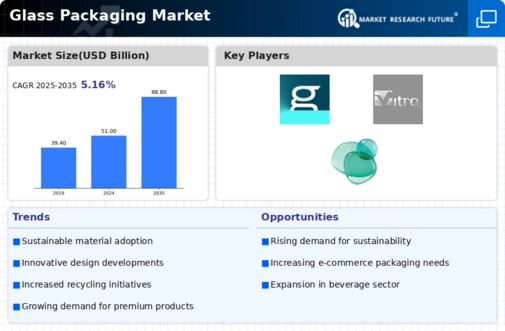

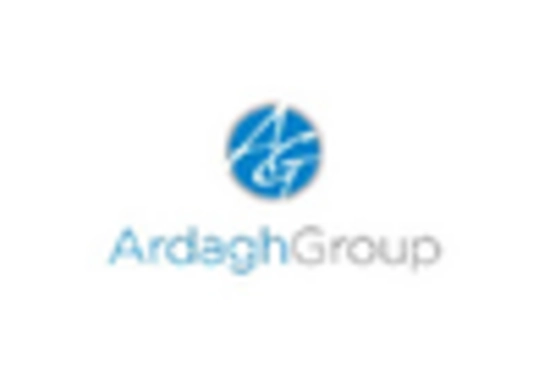
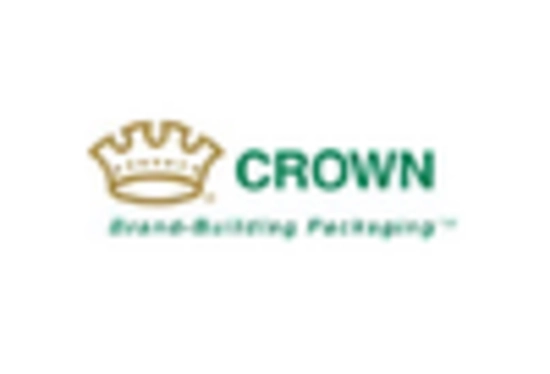
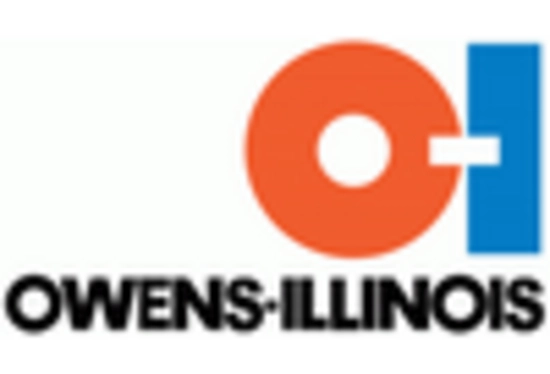

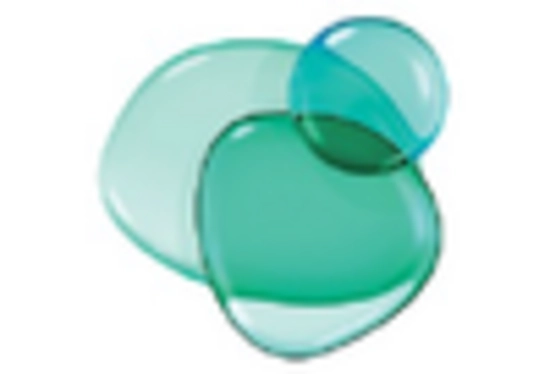

Leave a Comment